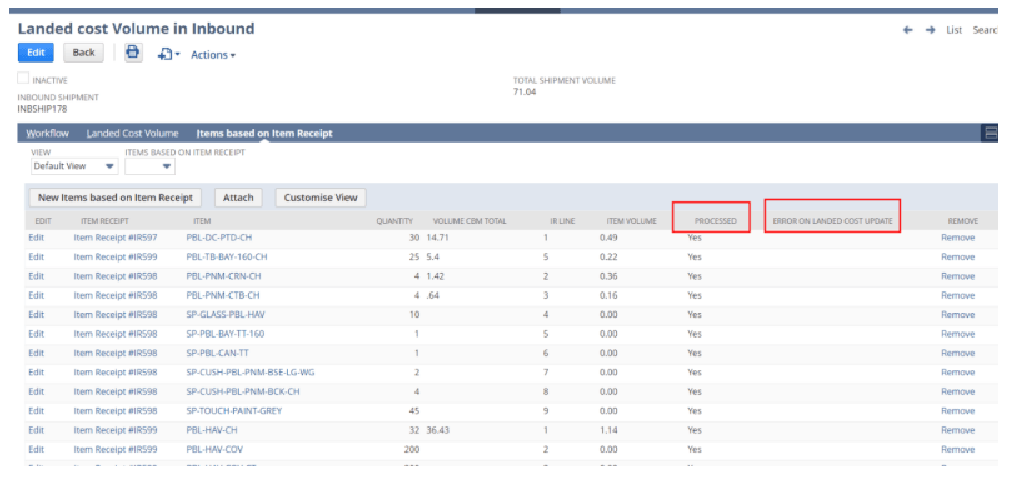Volume Based Landed Cost in Inbound Shipment
Automated landed cost allocation based on item volume from inbound shipments. Distributes costs across item receipts from multiple purchase orders using a volume-based method.
- SKU :PDNSVLC01
- Last Update :October 2025
- Published :27 Oct 2025
- Support for :NetSuite
- Implementation time :3 Business Days
Volume Based Landed Cost in Inbound Shipment
Landed Cost Allocation by Volume – Inbound Shipment
A customized method for calculating and distributing landed costs across multiple item receipts based on item volume. A custom page accessible from the inbound shipment record allows users to input bill and volume details, which are then allocated automatically across related item receipts. The customization ensures accurate landed cost computation using bill currency, exchange rates, and item volumes.
Volume-Based Landed Cost Distribution
Includes fields for selecting cost categories, sourcing bills, entering amounts, and specifying bill currency.
Links multiple item receipts to a single inbound shipment and calculates cost based on item volume and quantity.
Converts bill amounts based on exchange rate from item receipt transaction date when bill and item receipt currencies differ.
Tracks processing with clear statuses: ‘Not Started’, ‘Pending Processing’, and ‘Completed’.
Implementation Considerations
- The bill amount must be sourced from the configured account.
- Open accounting periods are required.
- Volume is the only cost allocation method available.
- Exchange rate is based on item receipt transaction date.
- Role permissions are assumed not to restrict access.
Why Use Volume-Based Landed Cost Allocation?
- Allocates landed cost based on actual item volume.
- Minimizes manual errors in cost distribution.
- Uses real-time data from item receipts and bills.
- Automates multi-receipt landed cost allocation.
- Simplifies cost tracking for finance and logistics.
- Reduces need for spreadsheets or external tools.
- View all cost details from inbound shipment interface.
- Non-editable item receipt sublist ensures auditability.
- Allows historical tracking.
- Custom page from Inbound Shipment.
- Option to select cost category, bill, currency.
Frequently Asked Questions
The system will convert the bill amount based on the exchange rate from the item receipt’s transaction date.
Yes, you can assign multiple cost categories; however, the number should be confirmed to ensure performance.
Cost categories, bills, enter amounts, and specifying bill currency.
No, previous landed cost sub-records are erased and replaced with new data during updates.
The system requires the accounting period to be open for cost allocation to item receipts. If the period is closed, the landed cost update will not proceed and must be retried once the period is reopened.


